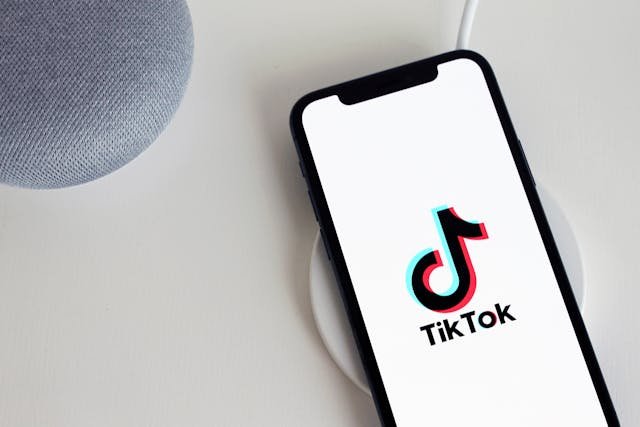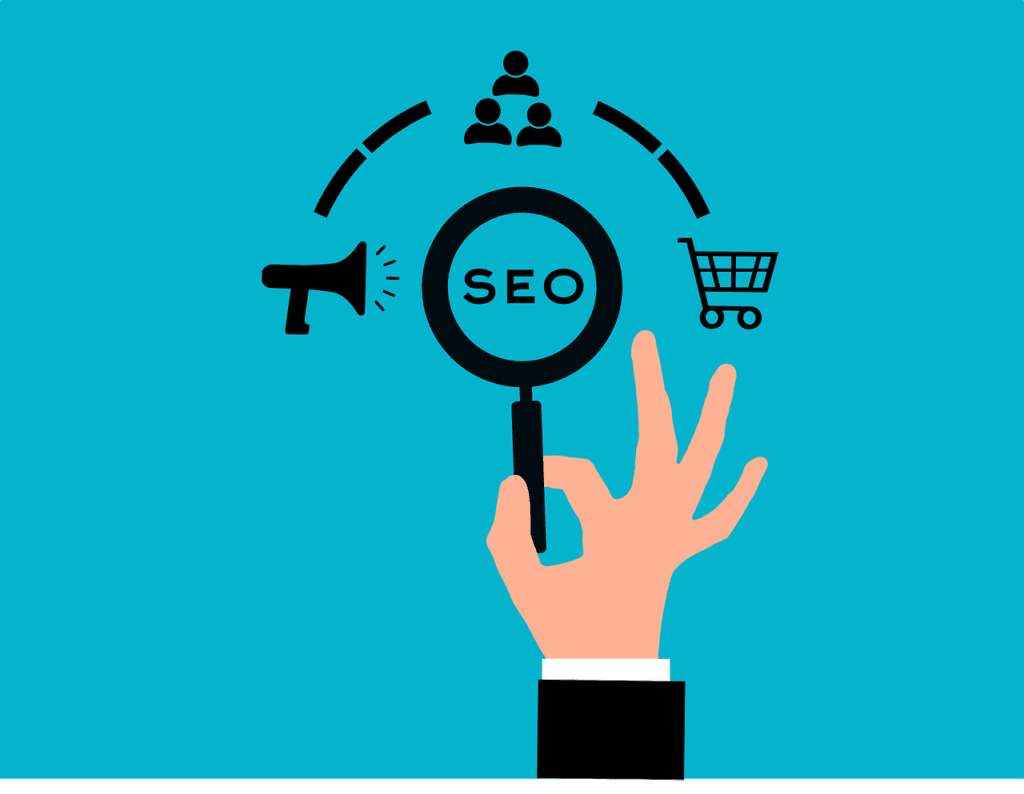In the world of B2B marketing, your landing page is often the first handshake with your potential customer. It’s the place where curiosity turns into interest and where a casual visitor decides if your solution is worth exploring further. But crafting a landing page that consistently drives demo requests? That’s an art and a science.
Why Your Landing Page Matters in B2B Demo Requests

Your landing page isn’t just another part of your website; it’s a decisive moment in the buyer’s journey. For startup founders, this is where potential customers take a significant step—going from being casually interested to actively engaging with your brand. When crafted strategically, a landing page designed for demo requests becomes one of your most powerful conversion tools.
In B2B, the stakes are higher because the buying process is more deliberate and often involves multiple decision-makers. Your audience is researching, evaluating, and narrowing down options, all while juggling deadlines, budgets, and internal approvals.
When they land on your page, they’re likely already interested in solving a specific problem. The question is, can your landing page convince them that your product is worth exploring further? If the page doesn’t make that connection quickly and effectively, you risk losing not just a single lead but potentially an entire account.
Your landing page must do more than just inform; it must inspire action. A prospect landing here is already intrigued, but they need confirmation. Does your solution address their specific pain points? Can they trust your brand? Will the demo provide real value without wasting their time? A high-performing landing page removes these doubts by offering clarity, credibility, and convenience.
Startup founders often have the added challenge of competing with established players in their space. A well-designed landing page is your chance to level the playing field. While larger companies might rely on brand recognition, your startup can shine by focusing on relevance and personalization. Speak directly to your audience’s needs and challenges, and you’ll build trust even if your logo isn’t as widely recognized.
The landing page is also where first impressions solidify. Visitors judge the professionalism of your brand based on how the page looks, feels, and functions. If your page is cluttered, outdated, or confusing, it reflects poorly on your business and undermines confidence in your solution. On the other hand, a clean, intuitive design with compelling messaging communicates that you understand your audience and are ready to meet their needs.
Another reason landing pages matter is the intent behind the visit. A prospect arriving on your demo request page likely found it through a targeted ad, a personalized email, or a referral. This intent means they’re already warm leads—they’re curious and considering your solution.
But intent can dissipate quickly if the page doesn’t immediately reinforce why they’re there. The right landing page validates their decision to click, drawing them further into your funnel with a compelling promise of value.
Beyond converting individual leads, a strong landing page impacts your broader sales strategy. The demo request is often the entry point to longer conversations, where sales teams can dive deeper into the prospect’s needs and showcase the product’s strengths.
A landing page that sets the right expectations paves the way for smoother and more productive demos. Conversely, a poorly constructed page can lead to unqualified leads, wasted time, and missed opportunities.
The analytics you gather from your landing page also play a crucial role. Every click, scroll, and form submission provides insights into how well your messaging resonates and where friction exists. For a startup, these insights are gold, allowing you to refine not just your landing page but also your entire marketing approach.
If you notice that visitors are abandoning the page before reaching the form, it may point to issues with your value proposition, design, or even CTA placement.
Understanding Your Audience’s Mindset

To craft a B2B landing page that drives demo requests, you must first understand your audience’s mindset. Every visitor who lands on your page has a specific goal, set of concerns, and a decision-making process. For startup founders, this means going beyond surface-level assumptions and digging into the underlying motivations, challenges, and expectations that guide their behavior.
The first thing to realize is that your audience isn’t looking for fluff—they’re looking for solutions. B2B buyers are often professionals tasked with solving pressing problems. Their time is valuable, and they have little patience for unclear messaging or unnecessary friction.
When they visit your landing page, they’re asking one critical question: “Will this solution solve my problem effectively?” Your page must answer that question quickly and confidently, or you risk losing them.
Consider the pressure your audience might be under. They’re often accountable to their team, department, or stakeholders, and any recommendation they make reflects on their judgment. Booking a demo isn’t just about exploring your product; it’s about whether they feel comfortable enough to involve their colleagues in the next step.
This means your landing page must convey not only value but also credibility. Highlighting trust signals like customer logos, testimonials, or industry recognition helps alleviate their hesitation and builds confidence in your solution.
Understanding your audience also involves knowing where they are in their buyer’s journey. A visitor landing on your demo request page is typically further along in the process—they’ve likely already identified their problem and are evaluating potential solutions.
They’re not here for general information; they’re looking for specific reasons to choose you. Your messaging should reflect this by focusing on outcomes, benefits, and differentiators, rather than generic explanations of what your product does.
Emotions play a larger role in B2B decision-making than many realize. While decisions are data-driven, they’re also influenced by feelings of trust, assurance, and risk aversion. Your landing page should address these emotions strategically.
For example, if your audience is worried about the complexity of implementing a new tool, emphasize ease of integration and robust support. If they’re concerned about ROI, provide examples of measurable results your product has delivered for similar companies.
Different stakeholders often visit your landing page, each with unique priorities. A C-level executive may focus on the big picture—cost savings, scalability, and competitive advantage. A manager, on the other hand, might care more about usability, team adoption, and day-to-day efficiency.
Understanding these varying priorities allows you to craft messaging that appeals to each audience. Use your headlines to capture the attention of executives and detailed subheadings or testimonials to address the concerns of managers.
Another crucial aspect is the pain points driving your audience to seek a solution. These pain points are not just functional—they’re often tied to broader frustrations, inefficiencies, or missed opportunities.
For example, if your audience is looking for a CRM solution, their pain point might not just be disorganized data but the lost sales opportunities that come with it. Your landing page should demonstrate that you deeply understand these challenges and offer a solution tailored to address them.
Timing is everything in B2B. Your audience’s mindset can vary based on external factors like industry trends, budget cycles, or competitive pressures. For instance, a business exploring solutions during their fiscal planning period may prioritize cost and ROI, while those reacting to a recent problem may need urgency and fast implementation. Understanding these timing dynamics can help you craft messages that align with their immediate priorities.
Lastly, consider the cognitive load your audience faces. B2B buyers often juggle multiple responsibilities and vendor evaluations simultaneously. Your landing page must simplify their decision-making process. Use clear, concise language and logical page structure to guide them through the information without overwhelming them. Remove unnecessary distractions and focus their attention on the key actions you want them to take.
Key Elements of a High-Converting B2B Landing Page

To drive demo requests, your B2B landing page must be optimized to guide your visitors seamlessly toward the action you want them to take. Each element on the page plays a strategic role in capturing attention, building trust, and persuading your audience that booking a demo is the logical next step. For startup founders, this means being laser-focused on clarity, relevance, and conversion-driven design.
Your headline is the first thing visitors see, and it must do more than grab attention—it should immediately convey the core value of your solution. Instead of using vague or aspirational phrases, focus on the specific pain point your audience faces and how your product resolves it. If your SaaS solution improves team collaboration, a headline like “Eliminate Workflow Bottlenecks and Increase Team Efficiency” directly communicates the benefit and creates curiosity.
The supporting subhead is equally important. It’s an opportunity to elaborate on your headline and set the stage for the rest of the page. Use this space to address a key audience concern or to highlight a unique feature of your product. For example, if your solution is easier to implement than competitors’, emphasize that: “Set up in hours, not weeks, and start seeing results immediately.”

Visual hierarchy is a subtle but powerful tool on your landing page. Visitors should be able to scan your page and quickly understand its key messages. Use headings, bold text, and strategically placed visuals to guide their eyes toward the most important content.
This keeps them engaged and prevents them from feeling overwhelmed. For example, your headline, value proposition, and call-to-action button should stand out, while supporting text can be less prominent.
High-quality visuals can amplify your messaging and build trust. Rather than relying on generic stock images, include product screenshots, workflow diagrams, or short video clips that showcase your solution in action. A brief video explaining what the demo entails or featuring a satisfied customer discussing their experience can provide an engaging preview of the value your product delivers.
The way you present your product’s value proposition can make or break your landing page’s success. Focus on outcomes rather than features. B2B buyers aren’t just looking for a list of capabilities; they want to know how your solution will impact their bottom line or solve their unique challenges.
Use concise, benefit-driven language that ties directly to your audience’s goals. For instance, instead of saying “Includes advanced reporting tools,” frame it as “Get actionable insights to improve decision-making and drive growth.”
Trust-building elements are non-negotiable on a high-converting B2B landing page. Your audience needs to feel confident that your solution is credible and proven. Highlight logos of well-known customers, awards, or certifications prominently on the page.
Include testimonials that speak to specific results, like “We reduced manual tasks by 50% within three months using [Your Product].” Case studies, even in brief form, can demonstrate real-world impact and reassure prospects of your expertise.
Clear, concise copy is essential. Avoid industry jargon or overly technical terms that might confuse or alienate your audience. The tone should be professional but conversational, making the page approachable without sacrificing credibility. Every word should serve a purpose, guiding visitors toward understanding your product’s value and taking action.
A standout call-to-action (CTA) is critical. Your CTA should be action-oriented and focused on what the visitor gains by clicking. Phrases like “See How It Works” or “Book Your Free Demo Today” are more engaging than generic “Submit” buttons. Place the CTA prominently above the fold, but also repeat it strategically throughout the page so it’s always accessible. Make the button visually distinct with contrasting colors to draw attention.
For a landing page to convert, it also needs to address potential objections. B2B buyers often hesitate due to concerns about time commitment, costs, or complexity. Anticipate these doubts and preemptively resolve them.
If the demo is free, emphasize that. If no commitment is required, say so. A section explaining what the demo includes—such as a walkthrough of key features or a live Q&A—can reassure visitors that their time will be well spent.
Finally, your landing page should create a seamless user experience. Fast load times, mobile responsiveness, and intuitive navigation are non-negotiable. If a visitor encounters technical issues or a confusing layout, they’re likely to abandon the page. A well-optimized experience ensures that nothing stands between your audience and their decision to request a demo.
Crafting an Irresistible Call-to-Action

The call-to-action (CTA) is the heartbeat of your B2B landing page. For startup founders, it represents the moment when curiosity transforms into engagement and interest becomes action. An irresistible CTA doesn’t just ask your visitors to take a step—it motivates, reassures, and removes friction all at once. This requires a combination of strategic design, persuasive language, and an understanding of your audience’s mindset.
To create a CTA that truly compels action, start by focusing on the value it promises. A generic phrase like “Submit” or “Click Here” gives no indication of what the prospect will gain. Instead, use language that highlights the benefit of clicking.
For instance, “Schedule Your Free Demo” emphasizes both the no-cost nature of the offer and the specific action the prospect is taking. Similarly, “See How [Your Product] Can Save You Time” connects the action to an outcome the visitor cares about.
The design of your CTA button is just as important as its wording. It needs to stand out without feeling jarring. Use contrasting colors that align with your brand palette but draw attention immediately. The size of the button should be large enough to be noticeable but not so big that it feels intrusive.
Placement is critical; your CTA should be above the fold, visible without scrolling, and repeated strategically throughout the page to capture attention at every stage of the visitor’s journey.
Context matters when crafting a CTA. Your audience’s readiness to act depends on where they are in the buyer’s journey. If your page targets visitors who are evaluating solutions, your CTA might emphasize exploration and learning, such as “Discover How We Can Help You Scale.” For prospects closer to making a decision, a CTA like “Book Your Personalized Demo” offers a tailored experience, signaling that you understand their specific needs.
To make your CTA even more compelling, pair it with a micro-benefit or assurance. Adding a brief phrase like “No credit card required” or “Takes just 15 minutes” directly addresses common objections, such as fear of hidden commitments or time constraints. These small reassurances can make a big difference in removing friction and increasing conversions.
Psychological triggers also play a significant role in creating an irresistible CTA. One effective approach is to create a sense of urgency. Phrases like “Book Your Spot Today” or “Limited Demos Available This Week” leverage scarcity to nudge prospects toward immediate action. Another tactic is to appeal to exclusivity, such as “Get Early Access to Our Advanced Features,” which makes the visitor feel they’re receiving a special opportunity.
A CTA’s effectiveness is amplified when supported by contextual content around it. Instead of placing the button in isolation, surround it with trust-building elements like a testimonial or a short list of benefits. For instance, a CTA could be followed by a quote from a customer who saw measurable results, reinforcing the value of taking the next step.
Don’t underestimate the power of A/B testing in refining your CTA. Test different variations of wording, colors, and placements to see what resonates most with your audience. Small tweaks—like changing “Schedule Your Demo” to “Book Your Free Demo”—can significantly impact conversion rates. Analyze the data, learn from visitor behavior, and iterate until you find the winning combination.
For mobile visitors, ensure your CTA is optimized for touchscreens. The button should be large enough to tap easily, and the form that follows should be streamlined to minimize effort. A poorly designed mobile CTA can cause frustration and lead to abandonment, so prioritizing the mobile experience is crucial.
Optimizing Your Demo Request Form for Conversions

Your demo request form is where all the hard work of your B2B landing page pays off—or falls apart. It’s the final step in converting an interested visitor into an actionable lead, and for startup founders, every detail of this form matters. Optimizing your form for conversions isn’t just about reducing friction; it’s about building trust, reinforcing value, and making the process as intuitive and appealing as possible.
The first principle of form optimization is simplicity. Visitors are far more likely to complete a form that feels quick and effortless. While it may be tempting to collect as much information as possible, every additional field creates an obstacle.
Focus only on the essentials that your sales team needs to qualify the lead and conduct the demo. Typically, this includes name, email, company, and perhaps one or two qualifying questions such as company size or industry. Resist the urge to ask for unnecessary details—you can gather more information during the demo itself.
Another key strategy is framing your form as a value-driven opportunity rather than a transaction. Instead of a heading that says “Request a Demo,” try “Get Your Personalized Demo to See How [Your Product] Solves [Their Problem].”
This subtle shift highlights the benefit of filling out the form and sets the expectation that the demo will be tailored to their needs. Visitors are more willing to share information when they understand what they’re getting in return.
Form design plays a significant role in conversions. A cluttered or poorly designed form can cause frustration and drop-offs. Use a clean, professional design with ample white space to make the form feel less overwhelming. Group related fields together logically, and ensure the form is easy to navigate. Consider using a multi-step form for longer submissions, as breaking the process into smaller, bite-sized steps often feels less daunting.
Including smart defaults or drop-down menus can streamline the form-filling experience. For example, instead of asking users to type their industry, offer a pre-populated list of options. Autofill functionality, such as pulling in location or company information based on email domains, can also speed up the process while reducing errors.
For mobile visitors, a responsive design is essential. The form should be easy to read and fill out on smaller screens, with fields optimized for touch inputs. Long forms or poorly spaced fields can lead to frustration on mobile devices, resulting in missed opportunities. Test your form across multiple devices to ensure it performs flawlessly no matter how visitors access it.
Reinforcing trust near your form can significantly impact conversions. Include brief, reassuring messages like “We respect your privacy and will never share your information” or “Your demo request will be confirmed within 24 hours.”
These statements address common concerns and demonstrate your commitment to professionalism. If your company has received notable recognition, awards, or certifications, consider placing those elements near the form to further build credibility.
Strategically placed microcopy within the form can also boost conversions. This is the small, helpful text that guides users through the process. For example, beneath an email field, you might include a note that says, “We’ll use this email to schedule your demo—no spam, guaranteed.” These small touches provide clarity and reassurance, reducing any hesitation the visitor might have.
An often-overlooked aspect of form optimization is the confirmation page or thank-you message. The experience doesn’t end when the form is submitted. Use this opportunity to confirm the next steps, such as “Thank you for requesting a demo! Our team will reach out within one business day to schedule a time.” This ensures visitors feel acknowledged and sets clear expectations, creating a smoother transition to the sales process.
Data analytics is your secret weapon for continuously improving your demo request form. Use tools like Google Analytics or form-specific tracking software to identify where users drop off or encounter difficulties.
Are they abandoning the form after starting? Is there a particular field causing hesitation? Use these insights to refine the design, adjust the language, or eliminate unnecessary fields. A/B testing can also help you determine which changes drive the best results, such as testing different form lengths, button placements, or CTAs.
Conclusion
Crafting a B2B landing page that consistently drives demo requests is both an art and a science. It’s about deeply understanding your audience, delivering value at every stage, and removing any obstacles that stand between your visitors and their decision to engage with your product.
For startup founders, where every lead counts, a high-performing landing page is not just a marketing tool but a critical driver of growth and credibility.




















